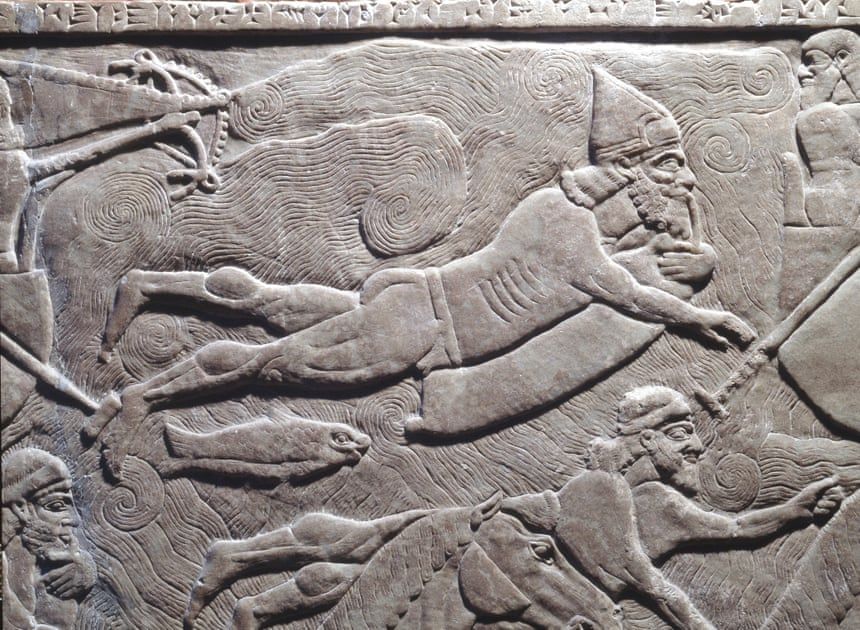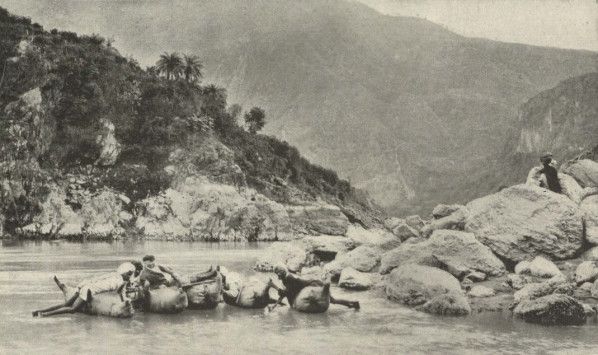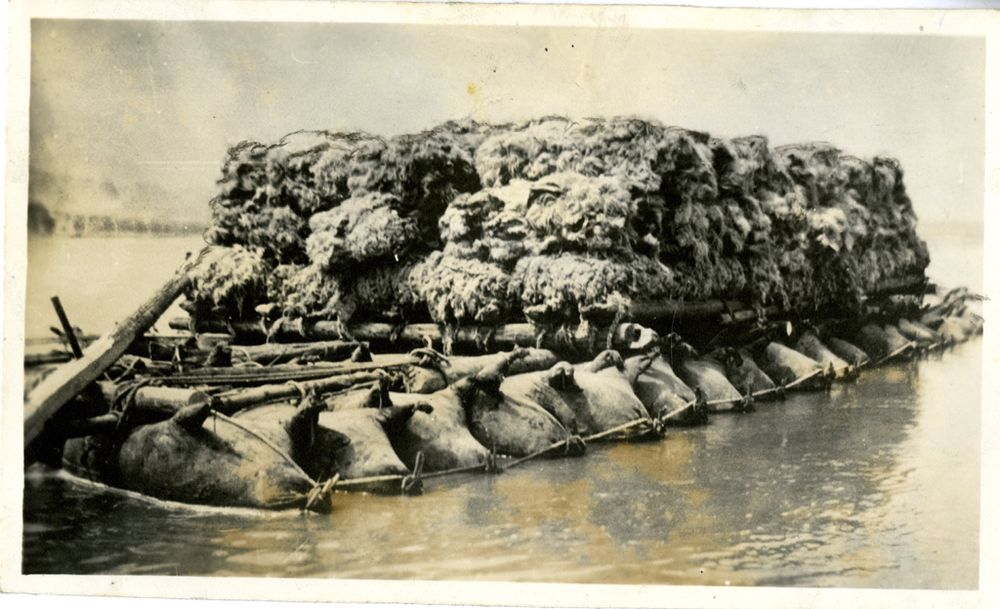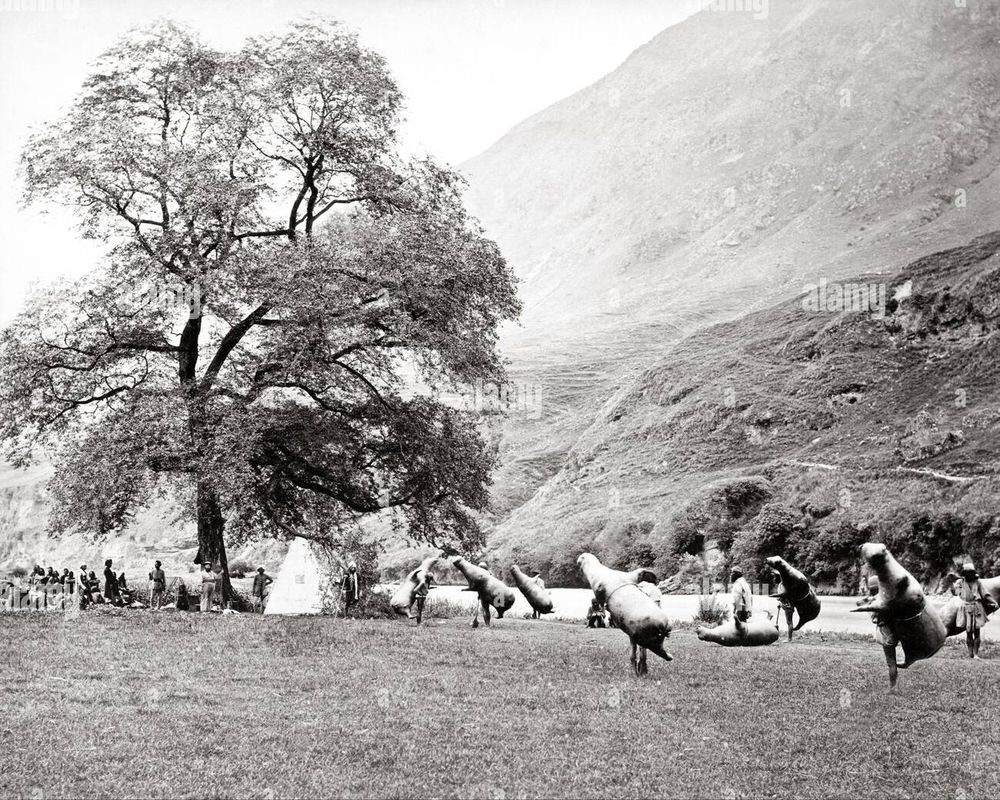Only the left hand side of the image is reproduced here below.
Cyrus the Great also used inflated or stuffed animal skins to cross a Babylonian river as mentioned by Xenophon.
Another example is Darius I who used the same technique in 522 BC to cross the Tigris River.
The Mongol troops of Genghis Khan carried inflatable animal skins with them on their westward conquests.
His grandson Kublai Khan also used inflated skin along with wooden rafts when the occasion required.
An Assyrian soldier floating on a goat-skin float.
Turned inside out, the natural openings (mouth, eyes etc.)
are then stitched up.
Finally it is turned back again and the main incision sewed up with thongs of raw hide.
The exterior in turn is tanned by steeping in an infusion of pomegranate husks.
When inflated a bullocks skin looks absurdly like a huge hairless bear.
A dog not used to the sight will often growl and show signs of uneasiness.
Usually a reed tube is inserted into the leg opening for the inflator to blow through.
In spite of its apparent primitivity and crudeness, these floats worked wonderfully.
Inflated bullock skins for ferry boats on Sutlej River in the Punjab, India.
Photo:Digital Commonwealth
Crossing the Sutlej near Shimla upon inflated animal skins.
Photo:Wikimedia Commons
Locals use bullock skins to cross a river in Kashmir.
Cow or ox skin raft loaded with wool in China.







